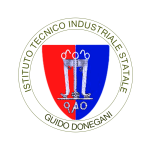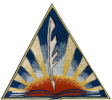The aim of this report is to describe the events during day 2 of the LTTA in Kaunas. The students were divided in four groups and our main task was to describe the consequences of water pollution on fluvial life.
In order to present all the information clearly, the students used an editing platform “Canva” to create colorful mindmaps. The mindmap was created by using many colors, descriptive imagery and appropriate information. They researched all the information online and used their knowledge from older experiences and also asked professionals in different fields for their opinions. At first, some guidance by the mentors was needed, but as time went on, they managed to get a hold of the pace of the work and they were beginning to work as a team.
Two students from our group presented our works. They mentioned the impact that pesticides, acids and other harmful substances have on our planet and human lives. As a conclusion, they thought up a statement and encouraged the listeners to make a change.
As far as reaching the day’s target is concerned, the students successfully presented their topics. They were loud and clear, learnt new knowledge and developed their teamwork skills.
Our speech:
The planet keeps nudging us with increasingly extreme droughts, reminding us that water is life. It is an essential resource upon which all living beings depend and it is crucial to all social and economic development, as well as energy production and adaptation to climate change. Nevertheless, we are now facing a gigantic challenge. To make change for the better its most important to understand how it affects the planet, more specifically the river ecosystem.
CAUSES
- Industries that are unable to properly dispose of their waste and end up draining it into fresh water, which enters rivers, canals and finally the sea. We are talking above all about the chemical industries that produce nitric acid, soda, phosphoric acid, ammonia, sulfuric acid, hydrochloric acid and numerous other polluting substances.
- Agricultural pollution, what I mean is uncontrolled, immeasurable use of fertilizers, herbicides, pesticides and pesticides in large quantities.
- Urban pollution encompasses all the water that derives from the discharges of our homes, our offices and other structures which, if not properly treated and purified, contribute to the pollution of our waters.
EFFECTS
1.Destruction of biodiversity; Water pollution depletes aquatic ecosystems and triggers unbridled proliferation in lakes.
- Contamination of the food chain. Fishing in polluted waters and the use of waste water 2. for livestock farming and agriculture can introduce toxins into foods which are harmful to our health when eaten.
- Infant mortality. According to our recourses diarrhoeal diseases linked to lack of hygiene cause the death of about 1,000 children a day worldwide.
SOLUTIONS
In today’s world, we all live to find solutions to our problems. Solving problems means making choices. Typically, when children tackle problems on their own, or in a group, they become resilient. They learn to look at challenges from a fresh perspective. So here right now we are working towards telling you the SOLUTIONS we have come up with.
* Use biodegradable materials, limit the use of plastic, try to contain waste production as much as possible. Help the planet
* Use natural detergents, such as those based on lemon or white vinegar, so as to avoid chemical detergents. Save the river ecosystem.
* Never throw solid objects or paints, solvents, medicines down the drain. Protect everything that can’t protect themselves.
* If you have a garden, use only natural fertilizers and herbicides. Synthetic products are a real problem for groundwater. Be a part of change.
EFFECT (SALMON)
to start off FISH SPECIES, one of the easiest to describe is salmon. Pesticides and petroleum-derived compounds suppress the immune system, rendering salmon weaker to pathogens that cause lethal diseases. Petroleum-derived compounds are also known to depress growth rate of juvenile salmon, which can affect their survival.
(PLANTS)
The river also has plants that are very important to the system. algae masses are a big part of the ecosystem that we cannot miss out on we all need to remind ourselves that even though we’re talking about pollution, some organisms need to be there for it to stay alive for example.
















